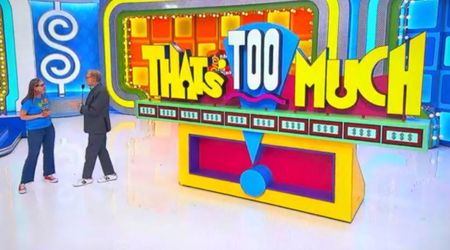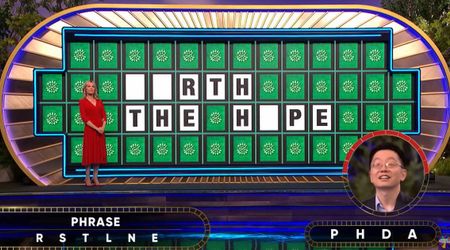10 Most Common Menu Tricks Restaurants Use To Make People Spend More

While These Tricks Are Common, They Maybe Hard To Spot

Restaurants across the globe employ ways to get customers to get more food and choose more profitable selections. They do so as they have high turnover numbers, and they need to figure out a way to make enough money to keep the doors open. The industry is ever evolving with new changes coming to menus that suit customers. However, restaurants often use new tricks in their menus as well to subtly nudge customers into increasing their spending. As these tricks can be hard to spot for the laymen, here’s a look at 10 sneaky menu tricks that restaurants use to make more money.
1. Number trickery

This is one of the most popular tricks used not just by restaurants but in retail as well. Restaurants turn a $10 meal into a $9.99 meal to make it look like a better bargain. Others may price it at a $9.50 or $13.50 model to make it look even better. Thus, while customers are surfing through the menu, they tend to gravitate toward the lower-looking digits. One exception to this may be the high-end restaurants, which don’t use the tactic as customers already know that they are going to be spending more than usual.
2. Missing Dollar Signs

Barring a few restaurants, most restaurants avoid using dollar or currency signs on the menus to help people not think about money. Restaurants want customers to think of food instead as they order. The removal of currency signs is also a tiny psychological trick that proves to be quite effective. Customers are more likely to buy something if they go by the enticing name of the food item instead of being reminded about the money they are spending.
3. Use of Value Menus

Restaurants often introduce value menus that offer items and meals of different price points. This is done to motivate customers to opt for the high-end or the priciest items on the value menu thinking it offers value. Further, a value menu with limited cheap items may also cause customers to bypass it entirely and opt for the expensive items on the regular menu. For example, if a value menu offers items like burgers and spaghetti, a customer looking for a steak may bypass it entirely and go for the regular menu.
4. Use of Brand Names

This is a common practice even among some of the most popular restaurant chains and high-end places. For example, TGI Fridays uses Jack Daniels BBQ sauce to create an association between the alcohol brand and their food. Thus, fans of whiskey or Jack Daniels are more likely to be attracted to sauce which is made from one of their favorite beverages. This is simple logic as people will tend to buy stuff with brand names that they have heard of before.
5. Use of Anchor Items

In restaurant menus, an anchor item is the ridiculously expensive one. However, it is placed on the menu next to other expensive items (like an anchor) to make them seem like a better value. For example, one menu may have a $10 and a $20 stake option and the other may have a $20 and a $30 steak option. In this case, the $20 option becomes a value deal for the second menu while it is the expensive option in the first one. Further, putting the $20 option next to a $50 steak makes it seem even more valuable.
6. Secret Portion Sizes

Despite offering full or half salads or sandwiches restaurants often avoid revealing the real portion sizes. This makes the consumers feel that the half-size options may be overpriced and it is more economical to go for the full-size options or vice versa. This is also referred to as bracketing and it is it may be targeted towards people who are looking to eat less. On the other hand, marked-up full-size options may cause people to spend more thinking they’re getting a better deal.
7. Making it Difficult to Compare Prices

While all restaurants may not do this, there are plenty that do. Some restaurants put the prices all over the place, often at the very end of the name of the food item. This is unlike menus that place the price consistently at the right in a column. Further, the use of fonts that are difficult to read makes it even tougher to compare the prices. Aligning the contents of the menu to the center pushes customers to read through the item descriptions first before getting to the price.
8. Use of Ethnic Terms

Several restaurants, especially Italian restaurants may have dozens of items with ethnic terms integrated in the name of the food. For example, Shrimp Spaghetti may be put up as “Shrimp scampi tagliatelle” to make it sound more authentic and therefore appealing. However, in reality, tagliatelle is just the Italian word for “noodles”. Thus, customers who are bored with regular-sounding food may find these fancy-sounding items refreshing and new, even if the actual dishes are simple.
9. Use of Adjectives

Some menus add extravagant adjectives to simple food items to make them sound more appealing. For example, ice cream may be mentioned as “sweet and creamy”, buffalo wings may be portrayed as “tender, juicy, and drenched in a delicious, tangy sauce”, and so on. This is a common practice among restaurants that go to great lengths to make their food sound more appealing. Thus customers who are craving ice cream may find it humanly impossible to resist some “cold, creamy, and sweet,” dessert.
10. Highlight Items to Make them Look Special

Most mid-range and low-end restaurants commonly employ this tactic to make some of their items look more tantalizing. They often put pictures of select items and highlight some as “Chef’s Special” to attract more attention to the dishes. These may be listed separately from all of the other dishes, and they tend to be the most expensive items as well. This is all to nudge the customers into spending more, especially the people who are celebrating a special occasion.























